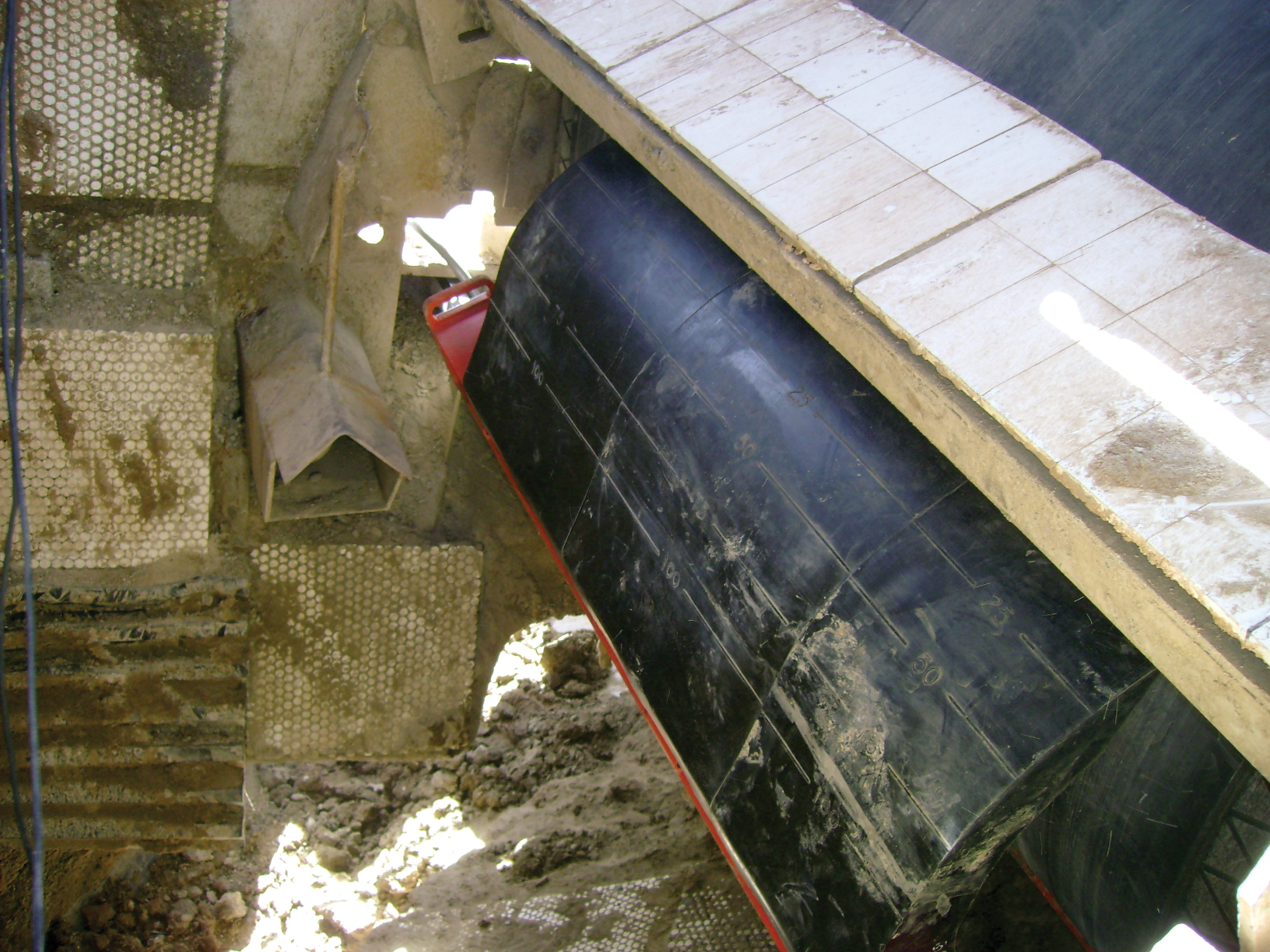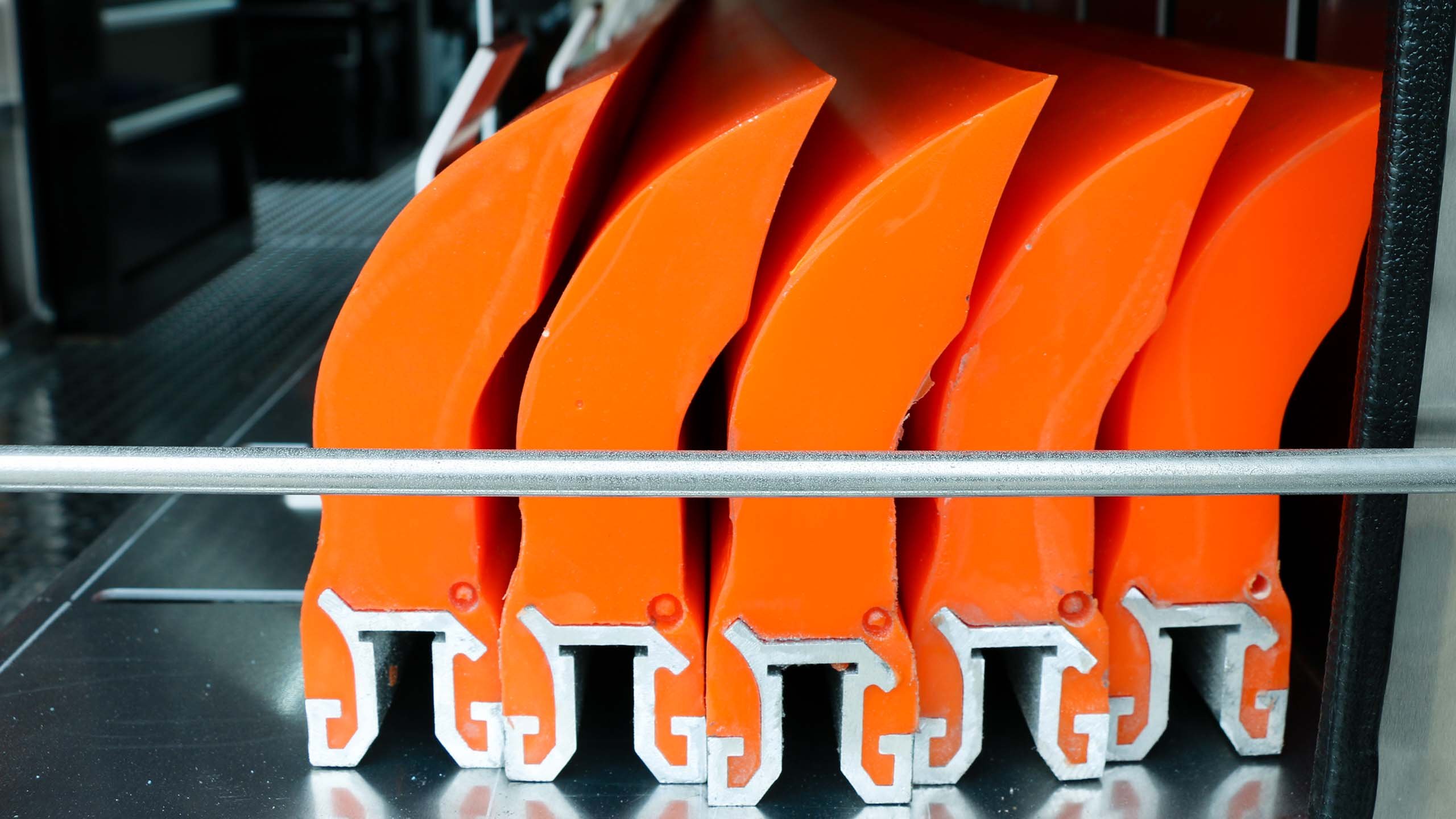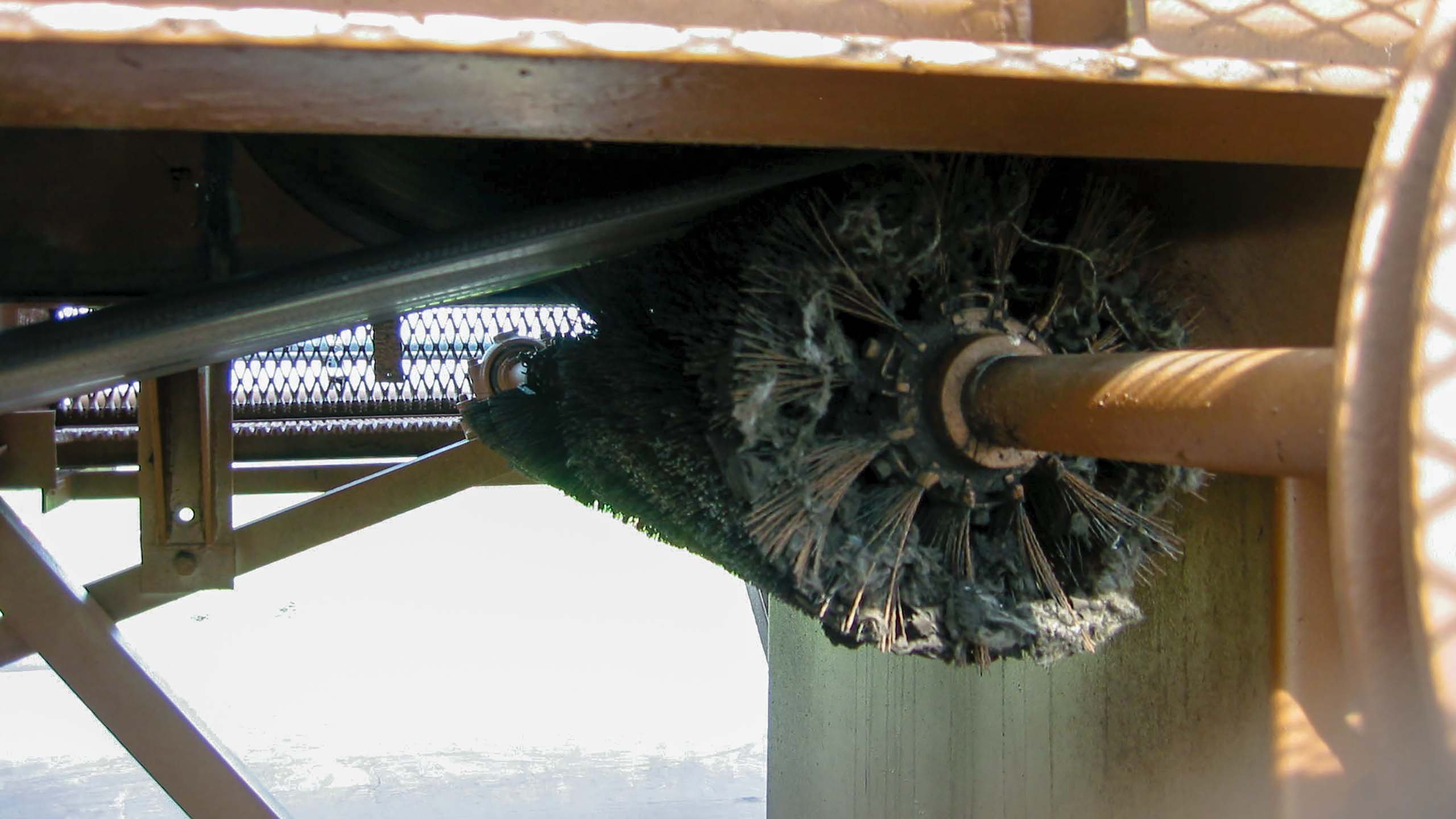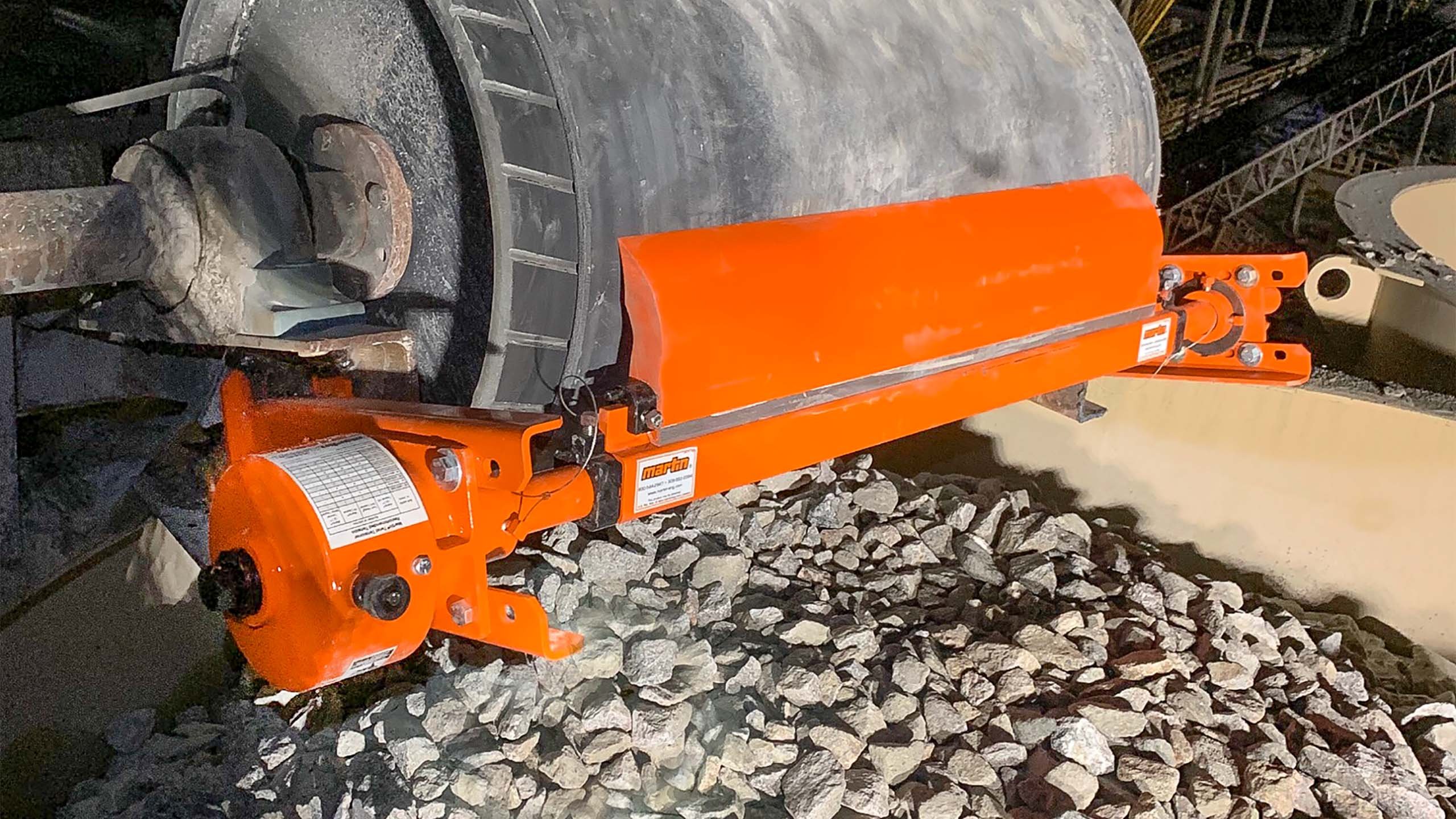A multiple-blade design with individual spring or elastomer support on each individual cleaning blade will keep each blade in proper cleaning tension against the belt, yet allow each blade to yield a lower pressure than the tensioning device’s total applied force. In other words, narrow blades can match up better against the belt, follow changes the surface contour, and bounce away from the belt for splice passage, and return to cleaning position more easily than a single, monolithic blade. This means a multiple-blade design will be more efficient and safer for the cleaner and the belt.

New developments in urethane have improved the ability of single-blade primary cleaners to maintain contact with the belt.
There are a number of materials used for cleaner blades, ranging from rubber and urethane to mild and stainless steels. Blades are available with inserts of tungsten carbide or fillers such as glass beads to enhance abrasion resistance and cleaning performance.
Cleaner manufacturers have extended the range of urethane materials available to provide improved performance for specific conditions, including improved resistance to abrasion, heat, chemicals, or humidity. In some cases, the unique combination of characteristics in a specific application requires a comparative testing program to determine the best material for that application.




















Leave Comment